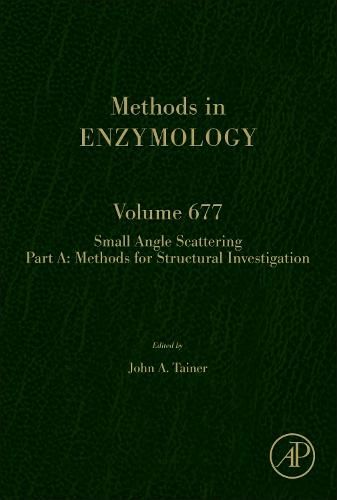Readings Newsletter
Become a Readings Member to make your shopping experience even easier.
Sign in or sign up for free!
You’re not far away from qualifying for FREE standard shipping within Australia
You’ve qualified for FREE standard shipping within Australia
The cart is loading…






Small Angle Scattering, Part A: Methods for Structural Investigation, Volume 675 in the Methods in Enzymology series, highlights new advances in the field, with new chapters in this updated release including SAXS foundations and metrics, Contrast variation sample preparation protocols, experimental procedures, and rudimentary analysis, Molecular deuteration for neutron scattering, Planning, Executing and Assessing the Feasibility of SANS Contrast Variation Experiments, Technical considerations for small-angle neutron scattering from biological macromolecules, and Advanced sample environments and capabilities at our synchrotron X-ray beamline with example applications.
Additional sections in the book cover SEC-SAXS-MALS data acquisition and processing pipeline at SIBYLS, SEC-SAXS: pros and cons, experimental set-up, examples and software developments, Radiation damage and sample economy for stopped-flow methods in the time regime of millisecond and above, Stopped-flow-time-resolved SAXS, Insights on Temp-jump, time-resolved SAXS, and much more.
$9.00 standard shipping within Australia
FREE standard shipping within Australia for orders over $100.00
Express & International shipping calculated at checkout
Small Angle Scattering, Part A: Methods for Structural Investigation, Volume 675 in the Methods in Enzymology series, highlights new advances in the field, with new chapters in this updated release including SAXS foundations and metrics, Contrast variation sample preparation protocols, experimental procedures, and rudimentary analysis, Molecular deuteration for neutron scattering, Planning, Executing and Assessing the Feasibility of SANS Contrast Variation Experiments, Technical considerations for small-angle neutron scattering from biological macromolecules, and Advanced sample environments and capabilities at our synchrotron X-ray beamline with example applications.
Additional sections in the book cover SEC-SAXS-MALS data acquisition and processing pipeline at SIBYLS, SEC-SAXS: pros and cons, experimental set-up, examples and software developments, Radiation damage and sample economy for stopped-flow methods in the time regime of millisecond and above, Stopped-flow-time-resolved SAXS, Insights on Temp-jump, time-resolved SAXS, and much more.